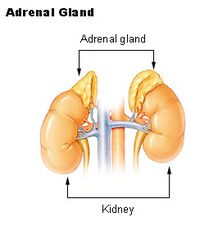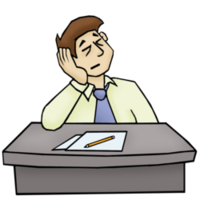Marriage Makes You…

A Chinese sage once said that if a woman took a pea and placed it in a large jar every time that she had sex in the first year of marriage, and then took out a pea every time that she had sex in the rest of her life, the jar would never be empty.
So many couples seem to think that a declining interest in sex I something to be expected, and agony columns and websites are crammed with complaints. Does it have to be that way? Is it just that people get bored with each other, or are too tired to bother?
Some intriguing new research suggests that there may also be a physical factor, reporting lower testosterone levels among married men compared with single, unmarried men.
The research is reported in this month’s issue of Current Anthropology by Peter B. Gray from the University of Nevada, Las Vegas, Peter T. Ellison from Harvard University and Benjamin C. Campbell from Boston University.
They investigated the links between male testosterone levels and marital status among modern-day cattle farmers from the Ariaal tribe in northern Kenya. Less than 1.5 percent of these men consider that their wives are a source of emotional support. The Ariaal males serve as herd boys until they reach puberty. They then undergo initiation, become warriors and begin to accumulate livestock. They do not marry and have children until around age 30. They value social bonds with male peers more than spousal or familial bonds.
The researchers measured testosterone in morning and afternoon saliva samples of more than 200 Ariaal men over the age of twenty. They found that monogamously married men had lower testosterone levels than unmarried men in both the morning and afternoon. However polygynously married men with more than one wife had even lower levels of testosterone than the monogamously married men.
The data suggest that male testosterone levels might reflect variations in male mating efforts. It may also be that in the tribal setting, older men, who typically have lower testosterone levels, may have the social status and wealth to obtain more than one wife.
Given the increasing amount of data concerning the importance of testosterone for normal brain and arterial function, this may be a big wakeup call. If men do nothing once they are in a relationship, and their brains begin to think that the “hunt” is over, their testosterone levels can plummet.
And that can be fatal.
It is essential for couples to work to keep passion – and testosterone – alive.
It is not sexism, it is millions of years of evolution.
Low Testosterone May Shrink Your… Brain

It is almost forty years since Fernando Nottebohm first began to describe some of the dynamic changes that occur in the brains of songbirds as the seasons change. Every year some regions of the brain grow in response to changes in ambient light levels and others regress. There are marked seasonal changes in the brains of fish, reptiles, amphibians, birds and even some mammals such as gerbils, mice and perhaps even in humans. But the magnitude of the changes in birds far outweighs any other species. It is hoped that that understanding the mechanism controlling that change may help us to develop treatments for age-related degenerative diseases of the brain such as Parkinson’s and dementia.
Researchers from the University of Washington and the University of California, Berkeley, have published some interesting new data in the Proceedings of the National Academy of Sciences. They report a striking shrinkage in the size of the brain regions that control singing behavior of Gambel’s white-crowned sparrows. This transformation is triggered by the withdrawal of testosterone and can be seen within 12 hours. The study is the first to report such rapid regression of brain nuclei caused by the withdrawal of a hormone and a change in daylight conditions in adult animals.
The research protocol was designed to mimic the natural seasonal changes that occur in the brains of the sparrows. Their song-control regions expand in the spring and summer leading up to the breeding season, as they use songs to establish territories and attract mates in Alaska. Later in the summer, as the birds get ready to migrate back to California, the same brain regions shrink.
To better understand what happens in the sparrows’ brain, the researchers received federal and state permits to capture 25 of the migrating male birds in Eastern Washington. They then housed the birds for 12 weeks before exposing them to 20 days of long-day conditions comparable to the natural lighting the sparrows would experience in Alaska during the breeding season. The birds were also implanted with testosterone.
At the end of 20 days, six of the birds were euthanized and the remaining 19 were castrated and testosterone implants were removed so there would not be any circulating testosterone in their systems. After 12 hours five more birds were euthanized and the remainder were euthanized at 2, 4, 7 and 20 days.
The researchers found that the size of the high vocal center (HVC) region decreased 22 percent within 12 hours after the withdrawal of testosterone and that the number of neurons in this song-control region fell by 26 percent after four days. In addition, the size of two other song-control regions called Area X and the RA significantly regressed after 7 and 20 days.
Much as I dislike animal experiments of any kind, it is invaluable to have an animal model system in which we can observe predictable neurodegeneration. As men age, circulating levels of testosterone decrease, and other research has shown that this decline may contribute to cognitive impairment.
This is an important new approach to understanding the interplay between nerve cell degeneration and hormones.
Morning Sickness and Breast Cancer

Morning sickness has always been a puzzle and there are almost as many theories as there are sufferers.
Amongst some of the most popular theories are:
- An increase in the circulating level of the hormone estrogen. Estrogen levels may increase by 50-100 fold during pregnancy
- Low blood sugar during the early phases of pregnancy
- An increase in progesterone relaxes the muscles in the uterus, which prevents early childbirth, but may also relax the stomach and intestines, leading to excess stomach acids
- An increase in human chorionic gonadotropin
- An increase in sensitivity to odors, which in turn overstimulates normal triggers to nausea
I have always been interested in the idea that it is a device to protect the baby from dietary toxins. This theory was expressed very eloquently by Margie Profet, who suggested that eating vegetables may also be a factor. Vegetables produce a small amount of toxins to deter insect infestation and while these toxins are normally harmless to adult humans, they are potentially dangerous to the baby. It is also impressive that morning sickness is usually at its worst in the first trimester, when the baby is extremely sensitive to many kinds of toxins. It would be nice if Margie’s theory turns out to be correct. She was largely ignored by specialists in reproduction because she was not one, and a the time did not have an advanced degree.
So I was very interested to see some research from the University of Buffalo that was presented last week at the Society for Epidemiologic Research’s Annual Meeting in Boston. The epidemiologists found that women who had morning sickness may have a 30 percent lower risk of developing breast cancer later in life than mothers-to-be who went through pregnancy without any nausea.
The study was based on data from participants in the Western New York Exposure and Breast Cancer Study, a population-based case-control study of breast cancer conducted in women 35-79 from two Western New York counties between 1996 and 2001.
The analysis compared extensive data on pregnancy-related conditions from 1,001 women with primary breast cancer and 1,917 women without breast cancer matched to cases by age and race who served as controls.
The data presented suggest that the lower risk of developing breast cancer observed with nausea and vomiting was stronger as the symptoms became more severe, or persisted longer into pregnancy. A modest trend toward increased cancer risk was seen in premenopausal women who gained more than 40 pounds during pregnancy, compared to those who gained less than 23 pounds but the trend did not reach statistical significance.
Perhaps the link has to do with sensitivity to estrogen.
But the other possibility is that the nausea and vomiting not only expel toxins that may harm the baby. but also toxins that may eventually increase a woman’s risk of breast cancer. And why might three months of vomitinj make the difference?
Because one of the reasons for weight gain during pregnancy is a subtle change in the intestinal absorption of certain nutrients that the baby needs.
Burnout and the Adrenal Glands

I have talked about burnout and the myth that it is caused by “adrenal fatigue.”
I saw some research (NR620) at the 2007 Annual Meeting of the American Psychiatric Association in San Diego, California last month that further nails the idea.
The investigators were from Ege University in Izmir, Turkey, and they looked at 37 people with burnout and did a battery of psychological and endocrine investigations.
The burnout group had:
- Higher levels of emotional exhaustion and depersonalization
- Higher depression and anxiety scores on the Beck depression and Beck anxiety inventories
- Higher scores on the global symptom index
The people with burnout did not have any differences in cortisol levels either at rest or after the investigators did a standard test to stimulate the adrenal glands. They reported exhaustion, but it was NOT caused by a problem with their adrenal glands.

I know that there are still plenty of people promoting the idea of adrenal fatigue, and there are many who sell their services online. The evidence that we have so far indicates that the adrenal glands of most people with burnout seem to be just fine.
Sleep Deprivation

When I was a young doctor we used to work absurdly long hours: for more than three years I worked every other night and every other weekend. It was not uncommon to be on your feet for three at a time. It is a wonder that we didn’t die or make more mistakes.
We know that sleep deprivation is not healthy, but we are only now beginning to find out just how damaging it can be. One of the biggest problems is that sleep deprivation interferes with the normal functioning of the immune system.
I saw an interesting paper (NR619) at the 2007 Annual Meeting of the American Psychiatric Association in San Diego last month.
A team from Korea took sixteen healthy volunteers and made them stay awake for 48 hours. They found that even this relatively short period of sleep deprivation produced some impressive effects on the body and the mind:
- Thyroid hormone levels rose
- The speed and accuracy of reaction times fell
- Blood glucose and protein levels rose, and there were disturbances in several liver function tests
- White blood counts increased
- There was a slight fall in immunoglobulin levels
We already know that insufficient sleep is associated with insulin resistance and weight gain, and it is likely that these are mediated by a rise in inflammatory mediators in the blood.
It is remarkable how quickly the effects occur.
And how pleased I am that young doctors no longer have to tolerate those incredibly long shifts.
Some things have changed for the better!
Hot Flashes and High Blood Pressure

Many women experiencing hot flashes do feel as if their blood pressure is going up.
Well, there is some new research linking hot flashes and hypertension.
A hot flash (sometimes also referred to as a “hot flush” or, incorrectly a “night sweat”) is a symptom of changing hormone levels considered characteristic of menopause.
Hot flashes are typically experienced as a feeling of intense heat with sweating and rapid heartbeat,
and typically last from two to thirty minutes on each occasion. The event may be repeated a few times each week or up to a
dozen times a day, with the frequency reducing over time. Excessive
flushing can lead to the skin problem rosacea.
The study from Weill Cornell Medical College was published in the March/April issue of Menopause: The Journal of the North American Menopause Society.
The researchers used portable monitors to record the blood pressure of 154 New York City women, aged 18 to 65 (mean age of 46). The women had no previous cardiovascular disease and either mild hypertension or normal blood pressure. Fifty-one women reported experiencing hot flashes. These women were found to have an age-adjusted mean systolic awake blood pressure of 141 and a mean systolic sleep blood pressure of 129 — compared to 132 and 119, respectively, for women not reporting hot flashes. The results were highly significant. For people whose lives are not complete without a little “p,” the values were: p=0.004 and 0.007. The group differences for systolic blood pressure remained statistically significant after controlling for conventional hypertension risk factors, race/ethnicity, age and body mass index (BMI).
This is important research: High blood pressure is a major risk factor for heart disease, with the latter being responsible for half of all deaths among American women 50 and older.
We need to understand more about the mechanism linking blood pressure and hot flashes, but this research already suggests that women with flashes are at especially high risk. So if you know someone who ishaving them, make sure that they are having their blood pressure monitored on a regular basis.
Teenage Mood Swings

How many of us have been perplexed by the violent mood swings of teenagers? One minute they are out skipping through the countryside and picking wild flowers. The next they seem intent on burning down the forest…
The mood swings and anxiety often make them seem as if they have some kind of “bipolar-lite.”
An important new study has revealed that teenage mood swings may be explained by biological changes in the adolescent brain. The research is published in the journal Nature Neuroscience.
Sheryl Smith, a physiologist at the State University of New York, and her colleagues experimented on adolescent female mice and showed that their brains respond to stress in a different way from adults and pre-pubescent individuals.
Anxiety is highly complex and involves a cascade of chemical neurotransmitters and genes. One of its important regulators is the brain’s principal inhibitory neurotransmitter, gamma-aminobutyric acid (GABA). GABA counteracts the effect of glutamate, an excitatory neurotransmitter in the limbic system of the brain. There is a kind of Yin/Yang relationship between GABA and glutamate.

The brain is full of what are known as “Neurosteroids:” steroid molecules that interact with genes and receptors in nerve cells. Neurosteroids generally reduce anxiety, but this research shows that they promote anxiety in female mice around puberty via the selective desensitization of extrasynaptic GABA-A receptors.
Stress causes the release of a steroid known as 3α,5α-Tetrahydroprogesterone also known as Allopregnanolone or THP. In adult and pre-pubescent individuals THP increases the “calming” effect of GABA in the limbic system. However, Smith and her team found that THP had the opposite effect in adolescent mice. In other words the developing adolescent brain simply behaves differently
It would appear that THP has two roles, one in the limbic system where it helps to calm things down, and another in the hippocampus where in adolescents it heats things up. The hippocampus is important in memory and also in the regulation of emotion.
The underlying mechanism appears to be different levels of expression of a type of receptor known as the “alpha-4-beta-2-delta” GABA-A receptor in the hippocampal brain region known as CA1.
In adults and pre-adolescents there are few of these receptors and THP modulates and calms these regions of the brain.
However, in adolescents, the expression of these receptors is high, and the anxiety raising effect of THP in the hippocampus outweighs the calming effect it has in the limbic system.
Smith and her team were able to reverse the puberty effect in the mice by genetically altering the number of receptors.
The result of all this is that the teenage brain amplifies its reactions to stress. So whether the young person reacts by crying or being angry, the emotion will be much more pronounced than it would be in a pre-pubescent person or an adult. To adults it may seem like an overreaction, to the teenager it is his or her only response.
This study is thought to be the first to suggest an underlying physiological, as opposed to a psychological explanation for teenage mood swings.
Apart from raising understanding about what teenagers are going through, the finding raises the possibility of a new approach to more severe mood swings, such as bipolar disorder.
Cortisol and Cigarette Smoking

There is an interesting study from London that may help us devise some new strategies for helping people stop smoking.
Cortisol levels decline after people stop smoking, and this decline has been linked to smoking relapse.
The researchers examined 112 smokers trying to quit using 15-mg nicotine patches. They measured salivary cortisol levels and reports of stress, withdrawal, and urges before quitting smoking and up to 6 weeks of abstinence among abstinent smokers using the patch. Thirty participants both remained abstinent and provided cortisol samples at all measurement times.
The fall in cortisol is greater among heavier smokers and may predict who will start smoking again. People with the lowest cortisol levels were more likely to relapse and to experience withdrawal symptoms, the urge to smoke and subjective stress.
This shows us once again that the cortisol system is complex and implicated in many different functions. Those adverts that tell us that we should block cortisol to lose weight are way off the mark. Even if the products could block cortisol, they may have other behavioral effects. The findings from this study are also interesting from the point of view of continuing claims that chronic fatigue and a load of other symptoms can be a result of “adrenal fatigue.”
Try as we might, we have still not been able to find much credible evidence that adrenal fatigue is a real phenomenon. I am an endocrinologist and I’ve reviewed the research literature in great detail, but I am not yet convinced.
And we would expect that the toxins in cigarette smoke would lower cortisol, and that it should rise if people quit. Not the other way around.
“A drug is neither moral nor immoral — it’s a chemical compound. The compound itself is not a menace to society until a human being treats it as if consumption bestowed a temporary license to act like an asshole.”
–Frank Zappa (American Composer, Guitarist, Satirist and Song Writer, 1940-1993)
Diseases of Discipleship

You will not find them listed on WebMD, but “Diseases of Discipleship” are nonetheless very real. I have mentioned them in Healing Meaning and Purpose and also here. They are the result of sudden access to spiritual energies that can upset the balance of the body, mind and spirit. The great value of having a teacher is to help you balance and work with these energies without being harmed by them.
Several of my own teachers talked a lot about these diseases of discipleship, but I would particularly like to single out Douglas Baker and the writings of Roberto Assagioli, Del Pe, Torkom Saraydarian, Stan Grof and Alice Bailey.
I have also had a great deal of experience with people undergoing spiritual crises. Many have been referred to me by priests, clergy and intuitives, because many of the individuals thought that they were “going crazy,” and some had ben given psychiatric diagnoses. That extensive experience has helped me and some of my students to describe some of the “symptoms” in more detail.
Roberto Assagioli identified five critical points where problems may arise:
- Just before spiritual awakening begins
- Crises caused by spiritual awakening
- Reactions to spiritual awakening
- Phases of the process of transmutation
- The “Dark Night of the Soul”
Today I am just going to focus on the crises caused by spiritual awakening, because a great many people are experiencing them at the moment.
Here are some of the more common signs and symptoms include:
- Visual disturbances
- Extreme sensitivity to light and sound
- Paradoxically they often also find a raised pain threshold
- Increased metabolic rate, which may cause a slight increase in body temperature and a little weight loss
- Variable libido: some people lose all interest in sex, but most experience an increase in sexual desire, which can take them and any partners by surprise
- Disturbances in circadian rhythms
- Disturbances in thyroid and adrenal function: the thyroid often becomes slightly – or sometimes more than slightly – overactive and the adrenal glands slightly less responsive to stimulation
- Hypoglycemia
- Hypertension
- Chronic fatigue
- Anxiety and a feeling of “butterflies” in the region of the solar plexus
- Inexplicable sensations roughly corresponding to the channels identified in Chinese and Ayurvedic medicine
- Irregular breathing patterns, usually hyperventilation
- Something that feels like electricity under the tongue and under the palate
- Crying for no readily apparent reason
- As peoples’ consciousness rises, it is quite common to experience “Synesthesia” in which senses overlap: people may taste sounds, feel colors and “hear and see” with different parts of the body
- Psychic abilities often begin to appear: clairvoyance, clairaudience, spiritual intuition and the ability to heal
- Many begin to feel and see their own Inner Light and the Inner Light of other people
Not everyone gets all of these symptoms and they may come and go for a while. Some people don’t get any at all, but they are unusual. There are two books by Hazel Courteney that detail some of what happened to her, and they are well worth a read.
It is important to emphasize that all of these signs and symptoms can also be caused by illnesses. So although most people who are going through all this want to avoid doctors, it is a very good idea to ensure that everything is okay. I once saw someone who had been told that she was having a kundalini experience, even though she did not have any of the usual features. She became very unwell, but felt much better when an insulin-producing tumor was removed from her pancreas.
The most important thing is to help people remain grounded. I have seen many people become extremely grandiose and even fanatical after going through a rapid spiritual awakening. It is also important to ensure that any physical symptoms – such as thyroid or blood pressure problems – do not continue unchecked.
Helping people who are going through spiritual change or crisis needs the help of a person or persons who understand physical and psychological problems, as well as being some way along the path of spiritual development. By “crisis” I do not mean crisis of faith, but a critical turning point in an individual’s personal development.
There are plenty of good ways of grounding using some physical, psychological and subtle system exercises. I have dozens of excellent techniques that I can publish if you are interested. Sometimes it is also a good idea to eat some heavy food.
It can be very helpful to get away form other people for a while. This doesn’t mean becoming a monk or nun, but just to avoid a bad case of people poisoning. In their overly sensitive state they can pick up a lot of negative things from the people around them. I have known a good many people who would begin to experience all the physical and psychological symptoms of the people around them.
Once we have confirmed that the person does not have all this as a result of thyroid disease or anxiety, it is essential to show them what is going on and the best way to approach and conceptualize it.
Next we help people to control some of the impulses that can otherwise swamp them. One of the many reasons for development of the sophisticated mind control techniques developed by Tibetan Buddhism was to help people watch their spiritual unfoldment without being overwhelmed by it.
We also try to help people to transmute psychological energies so that they can be used constructively.
Everybody is different, but in some people acupuncture, qigong, Reiki and homeopathy have all been helpful. Several of the flower essences can be very useful, in particular:
Vervain
Star Tulip
White Yarrow
Pink Yarrow
Every expert that I know in the field of spiritual development agrees with my observation that there are currently more people having major spiritual changes than ever before. It is essential for us all to know how to protect, support and birth them.
“To penetrate into the essence of all being and significance, and to release the fragrance of that inner attainment for the guidance and benefit of others, by expressing in the world of forms – truth, love, purity and beauty – this is the sole game that has any intrinsic and absolute worth. All other incidents and attainments can, in themselves, have no lasting importance.”
–Meher Baba (Indian Spiritual Teacher who, from July 1925 maintained Silence, 1894-1969)
“You knock at the door of Reality. You shake your thought wings, loosen your shoulders, and open.”
–Jalal al-Din Rumi (Afghan Sufi Poet, 1207-1273)
“Life is a series of awakenings.”
–Sri Swami Sivananda (Indian Physician and Spiritual Teacher, 1887-1963)
“What we usually call human evolution is the awakening of the Divine Nature within us.”
–“Peace Pilgrim” (a.k.a. Mildred Norman, American Peace Activist, 1908-1981)
Hormones, Addictions and Mood

People working with mental illness have been for years now been puzzled by two observations. The first is that mood disorders and schizophrenia follow quite different trajectories in men and women. Women tend to be more vulnerable to mood disorders and if they get schizophrenia it tends to be less severe and to have fewer “negative” symptoms, such as flat, blunted or constricted affect and emotion, poverty of speech and lack of motivation until after menopause. We have looked at some of the reasons for the different rates of mood disorder, in terms of relationships and social pressures, but there must also be a biological component. The second puzzle is that women are more vulnerable to addictive drugs in the days before they ovulate.
New research published in the Proceedings of the National Academy of Sciences may provide part of the answer to both puzzles.
Colleagues at the National Institute of Mental Health (NIMH), a component of the National Institutes of Health (NIH), have conducted a fascinating imaging study that has shown that fluctuations in levels of sex hormones during women’s menstrual cycles affect the responsiveness of the reward systems in the brain.
The reward system circuits include the:
- Prefrontal cortex, which has key roles in thinking, planning and in the control of our emotions and impulses
- Amygdala, which is involved in rapid and intense emotional reactions and the formation of emotional memories
- Hippocampus, which is involved in learning, memory and navigation
- Striatum that relays signals from these areas to the cerebral cortex
It has been known for some time that neurons in the reward circuits are rich in estrogen and progesterone receptors. However, how these hormones influence reward circuit activity in humans has remained unclear.
The researchers used functional magnetic resonance (fMRI) imaging to examine brain activity of 13 women and 13 men while they performed a task that involved simulated slot machines. The women were scanned while they did the task, both before and after ovulation.
When anticipating a reward, in the pre-ovulation phase of their menstrual cycles the women showed more activity in the amygdala and frontal cortex. When women were actually winning prizes, their reward systems were more active if they were in the phase of their menstrual cycle preceding ovulation. This phase of the cycle is dominated by estrogen, compared to postovulatory phase when estrogen and progesterone are both present. When winning, the main systems that became active were in the parts of the brain involved in pleasure and reward.
The researchers also demonstrated that the reward-related brain activity was directly linked to levels of sex hormones. Activity in the amygdala and hippocampus was in directly linked to estrogen levels, regardless of where a woman was in her cycle. When women won prizes during the post-ovulatory phase of the cycle, progesterone modulated the effect of estrogen on the reward circuit.
Men showed a different activation profile from women during both anticipation and delivery of rewards. Men had more activity in the striatum during anticipation compared with women. On the other hand, women had more activity in a frontal cortex when they won prizes.
This research could have a number of important implications. The most obvious is that it confirms what many women know already: they are more likely to take addictive substances or to engage in pleasurable – but perhaps impulsive or risky – behaviors just before they ovulate.
It is not difficult to imagine why this might have developed during evolution.
“Coming to terms with the rhythms of women’s lives means coming to terms with life itself, accepting the imperatives of the body rather than the imperatives of an artificial, man-made, perhaps transcendentally beautiful civilization. Emphasis on the male work-rhythm is an emphasis on infinite possibilities; emphasis on the female rhythms is an emphasis on a defined pattern, on limitation.”
–Margaret Mead (American Anthropologist and Writer, 1901-1978)






